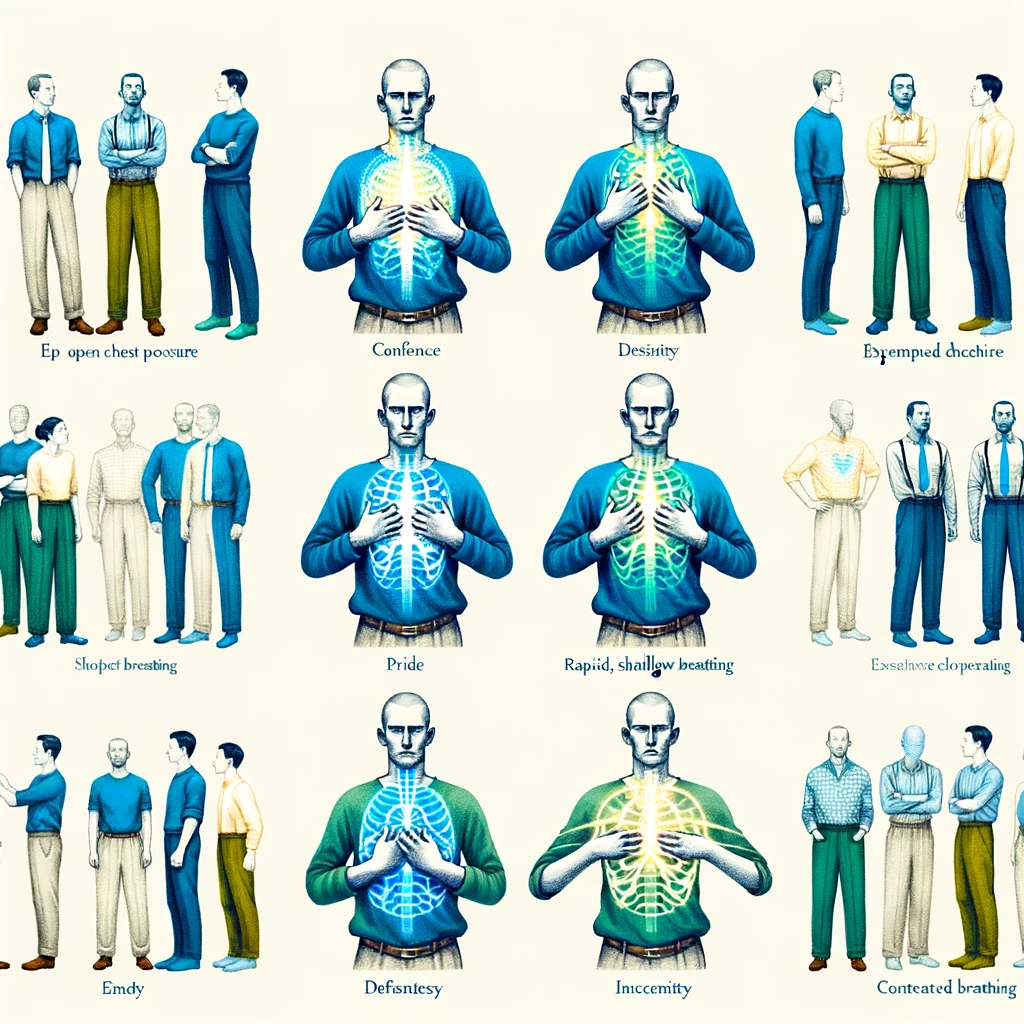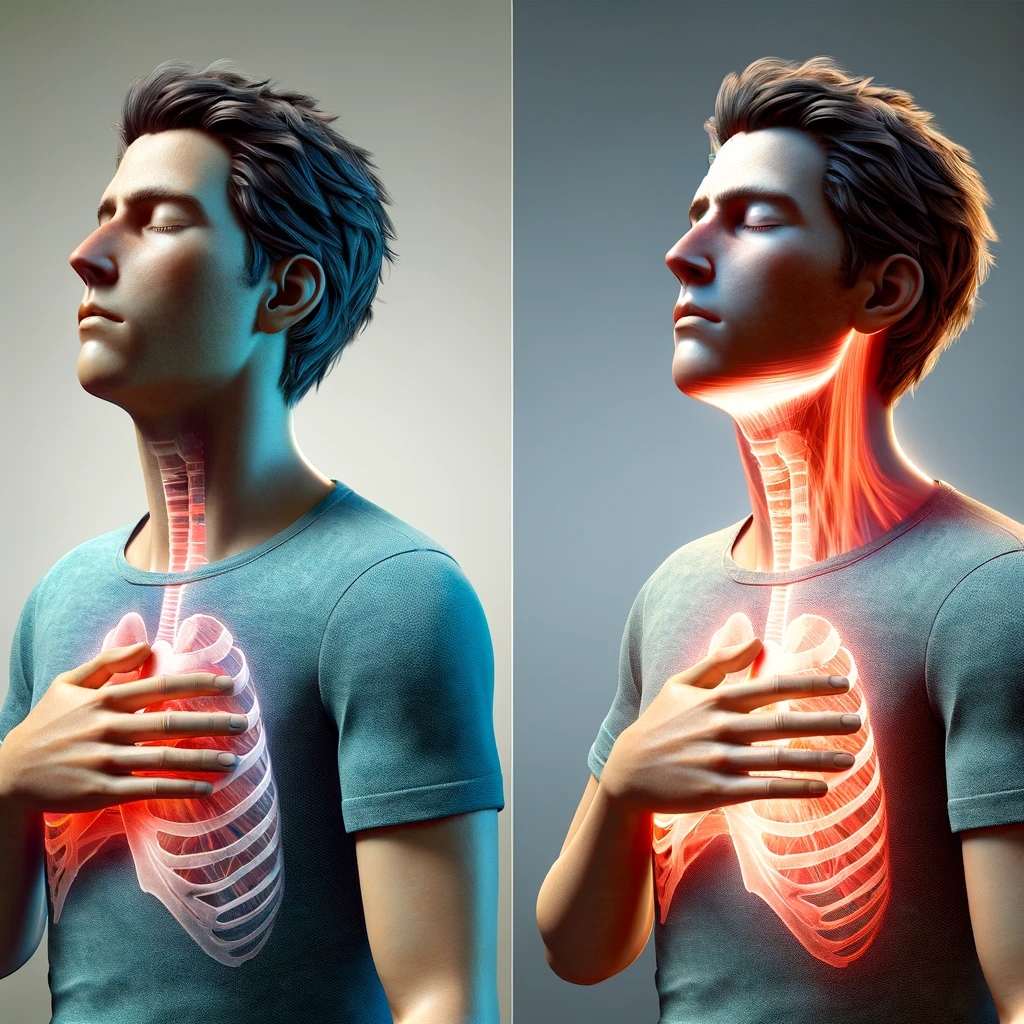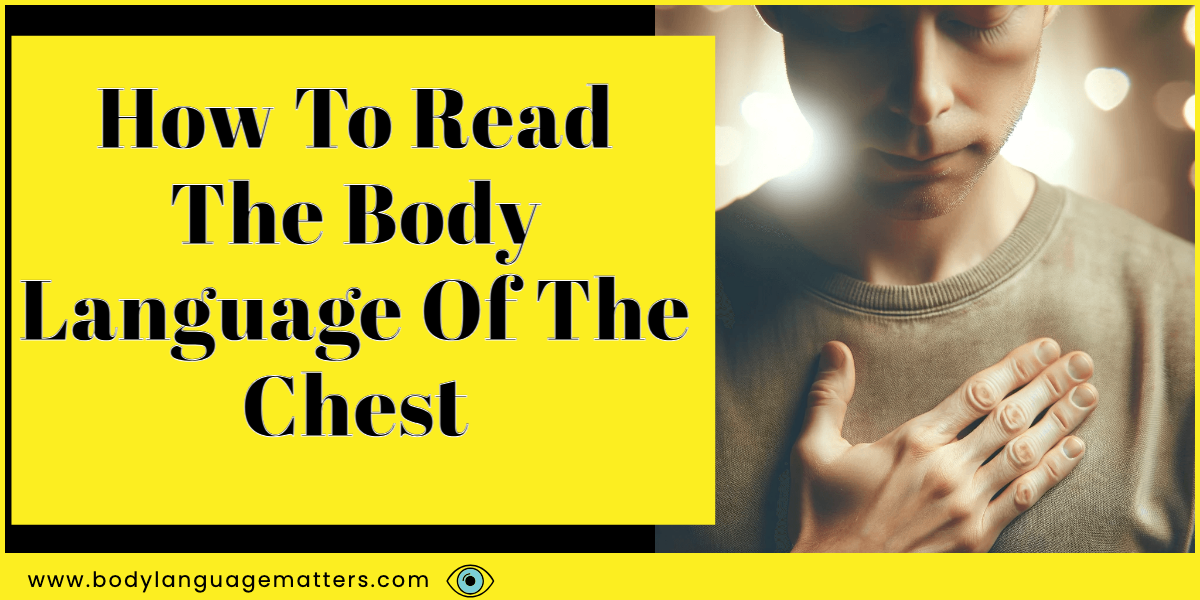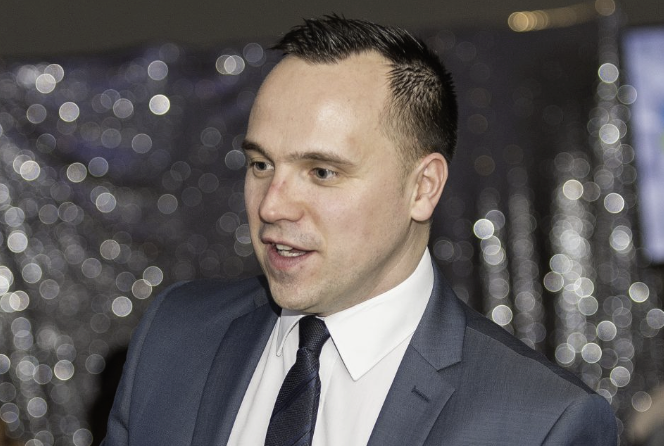Body language is really interesting and has many parts to it. It can tell us more than what people say with words.
One important part of body language is how people use their chest to show feelings or thoughts. For example, how someone holds their chest can tell us a lot about what they’re feeling or thinking.
In this article, we’ll talk about these chest movements and what they mean. I’ve also provided a quick guide below just in case you need to know something fast.
Table of Contents
How to read the body language of the chest

Reading the body language of the chest involves understanding various cues that can indicate a person’s emotions, intentions, or level of confidence. Here’s a simple guide to help you interpret these signals.
- Open vs. Closed Posture: When someone’s chest is open and exposed, it usually signifies confidence, openness, or a willingness to engage. This can be seen in people who stand with their arms at their sides or use gestures that open up the chest area. On the other hand, a closed posture, where the chest is hidden or shielded by crossed arms, might indicate defensiveness, discomfort, or a lack of openness.
- Expansion and Contraction: Notice how the chest expands or contracts in different situations. A puffed-out chest can be a sign of pride, arrogance, or an attempt to appear larger and more dominant. Conversely, a contracted chest, where the shoulders are hunched forward, can suggest insecurity, fear, or a desire to minimize one’s presence.
- Breathing Patterns: The rate and depth of breathing can be observed in the movement of the chest. Rapid, shallow breathing might indicate anxiety, stress, or excitement, while deep, slow breathing is often associated with calmness and relaxation.
- Alignment and Direction: The direction the chest is pointing can indicate interest or focus. For example, if someone’s chest is pointed directly towards you, it often means they are fully engaged or interested in the interaction. If their chest is turned away, it could suggest a desire to leave or a lack of interest.
- Touching or Covering the Chest: If a person frequently touches or covers their chest, it can indicate various emotions. Touching the chest lightly might show sincerity or heartfelt emotion, while covering the chest can be a protective gesture signaling vulnerability or discomfort.
- Mirroring: In social interactions, people often subconsciously mirror the body language of others. If you notice someone mimicking your chest posture, it could be a sign of rapport or a desire to connect.
Remember, body language should be read in context and in combination with other signals, including facial expressions, tone of voice, and overall behavior. No single gesture is definitive on its own, and misinterpretations can occur if you rely on isolated observations.
Quick Guide To The Most Common Body Language Cues
- Open Chest: Indicates confidence, openness, and willingness to engage.
- Crossed Arms: Often a sign of defensiveness, discomfort, or self-protection.
- Puffed Chest: Shows pride, arrogance, or an attempt to appear dominant.
- Hunched Shoulders: Suggests insecurity, fear, or a desire to minimize presence.
- Rapid Chest Movement: Can indicate anxiety, stress, or excitement.
- Slow, Deep Breathing: Associated with calmness and relaxation.
- Chest Pointing Towards Someone: Signifies interest and engagement.
- Chest Turned Away: May indicate disinterest or a desire to disengage.
- Touching the Chest: Can show sincerity, heartfelt emotion, or vulnerability.
- Mirroring Chest Posture: Indicates rapport or a desire to connect.
These cues should be read in context and alongside other nonverbal signals for a more accurate understanding.
Understanding Body Language Cues Of The Chest
Deep Breath, Rapid Breathing

This can be a sign of stress, fear, or anger. The context, such as whether the person has just engaged in physical exertion, is key to understanding this cue.
Shallow Breath, Rapid Breathing

Fear or anxiety often triggers shallow, rapid breaths. Calming the breath by taking slow, deep breaths can alleviate this state.
Pressing on Solar Plexus

Pressing on the solar plexus is a common way to pacify nerves. The harder the pressing, the greater the stress the individual is likely feeling.
Palm on Chest

A palm on the chest conveys sincerity but be warned – both honest and deceptive individuals can use this gesture.
Collarbone Massage

Feeling vulnerable or stressed? A collarbone massage may be a sign of these emotions.
Hand Raking of Chest

If you see someone raking their hands across their chest, this is a strong indicator of anxiety and may be seen during panic attacks.
Pulling Clothing to Ventilate

This is a sign of heat or stress and is linked to a body temperature rise.
Alternative Sore Of Information
For more information on body language of the chest check
Body Language How to read others Thoughts by their gestures Allan Pease
Frequently Asked Questions
What Is the Significance of Chest Cues in Body Language?
Chest cues in body language can say a lot about a person’s inner emotions and thoughts. Whether it’s a friendly gesture or a sign of distress, understanding these cues can create deeper connections and empathy with others. Just like a firm handshake may indicate confidence, a subtle tilt of the body or nod can reveal agreement or understanding. These cues are part of the rich tapestry of nonverbal communication that we all use daily.
Can Chest Cues Be Misleading?
Yes, chest cues can sometimes be misleading. A person may consciously or unconsciously use certain cues to deceive or mislead others. For instance, someone might press their hand to their chest to feign sincerity. Being mindful of the context and looking for other signs, like the tone of voice or a certain tilt in posture, can help decode the true meaning.
Are Chest Cues the Same for Men and Women?
Chest cues are generally universal, but there might be slight variations between men and women. Some cues are influenced by cultural or societal norms, and the way a person might nod or express distress could differ. It’s essential to approach body language with an open mind and recognize that individual differences exist.
You may also like
Final Thoughts
Understanding body language, especially Chest Cues, is a fascinating and valuable skill. Whether you’re talking to someone in a business negotiation or trying to decode the emotional body language of a friend, these cues can be instrumental. Learning to interpret body language can make a good first impression and enrich your social interactions.

